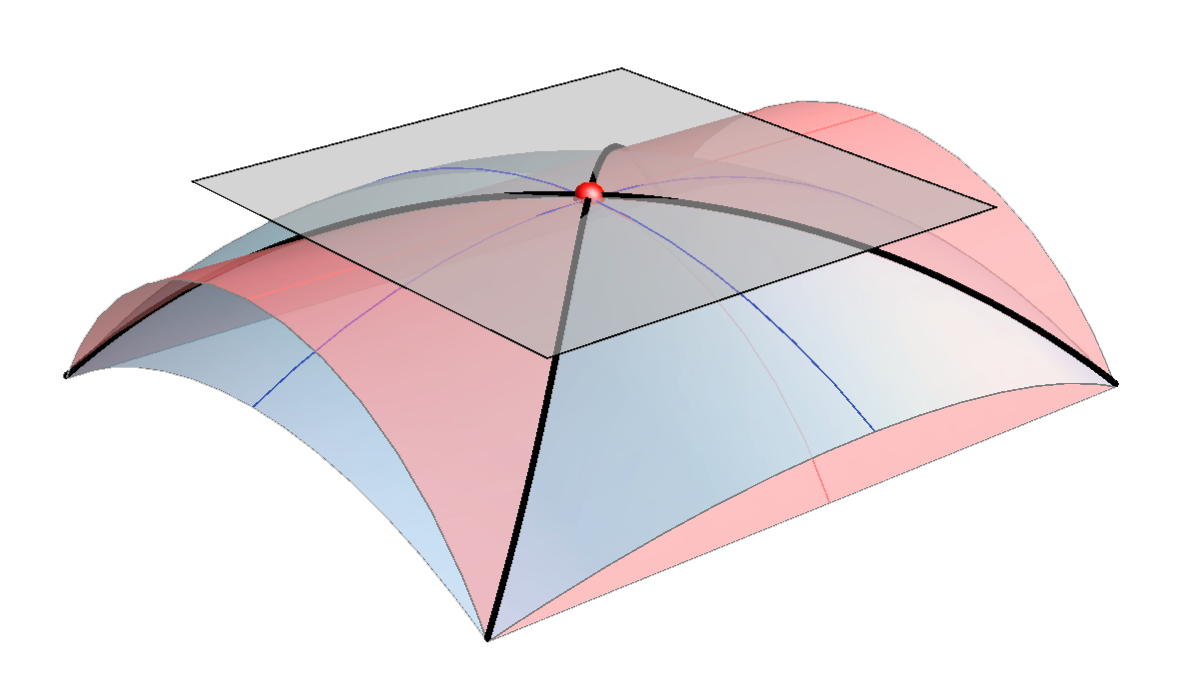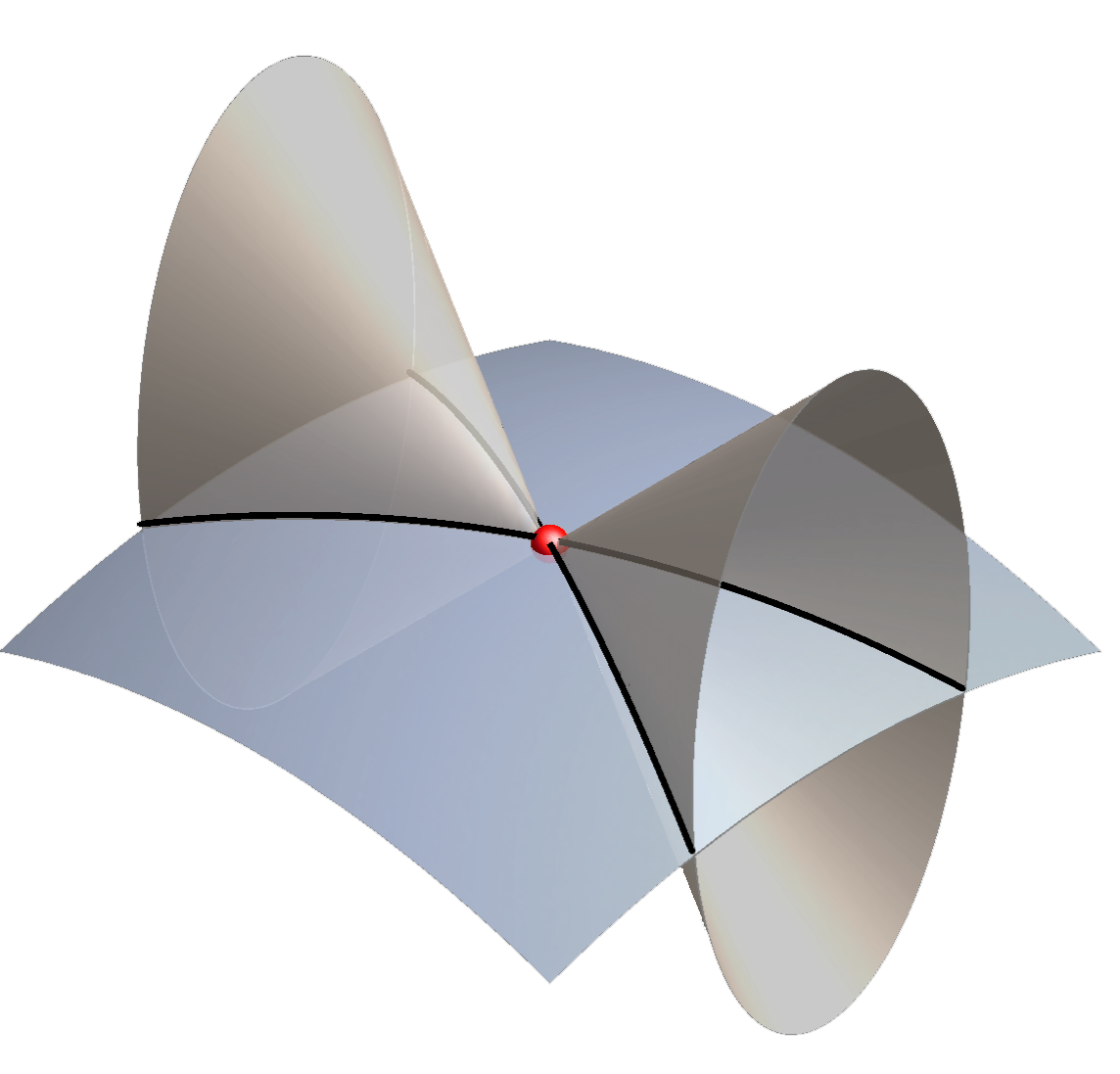It is clear that these points can be real or imaginary.
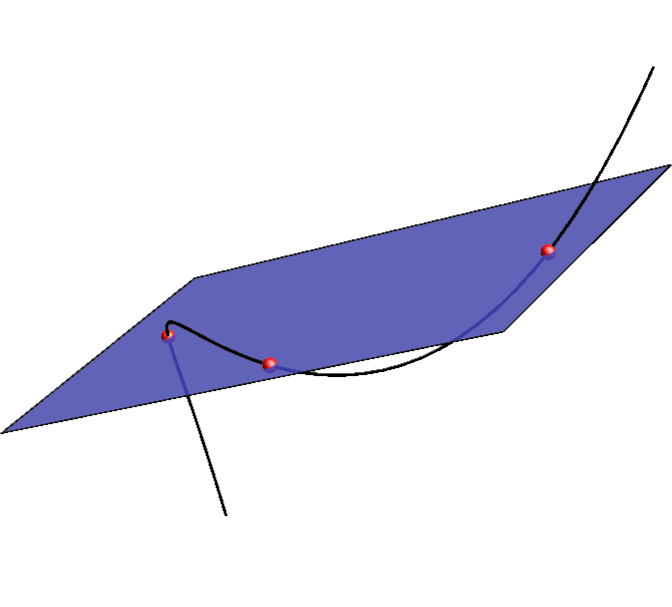 Space curve of the 3rd order. |
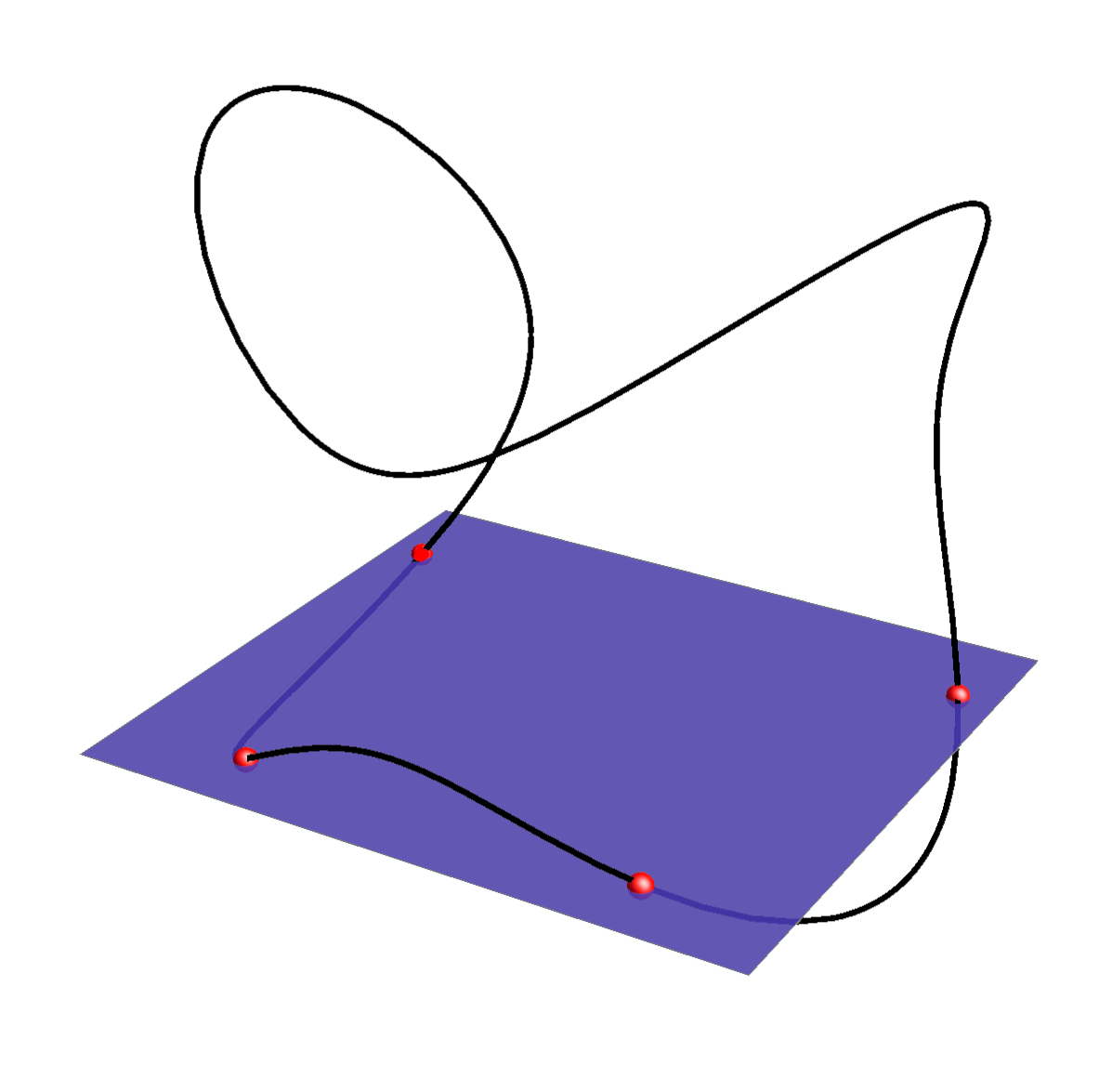 One-branch space curve of the 4th order. |
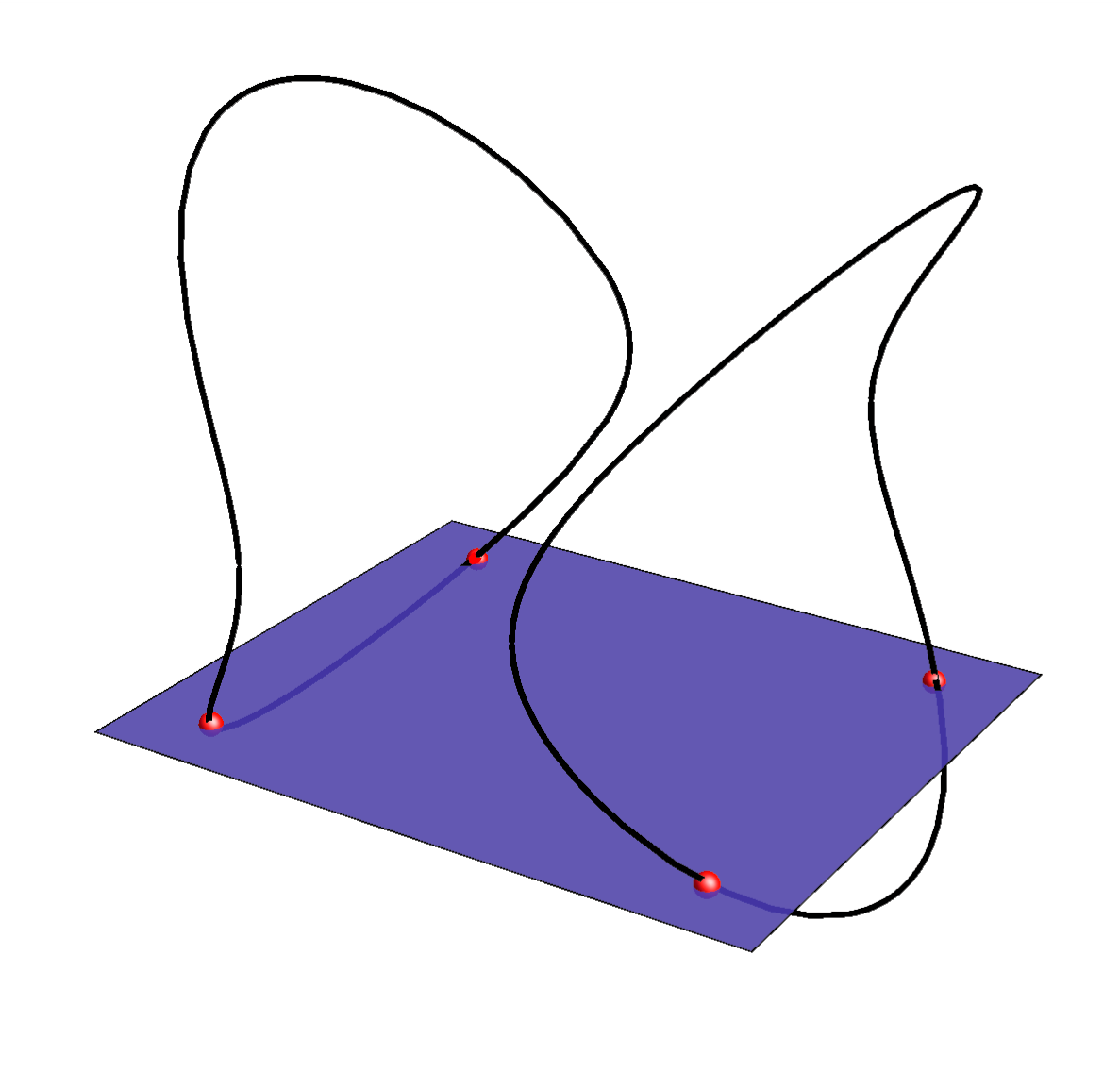 Two-branch space curve of the 4th order. |
Algebraic space curve can have multiple points (double points, triple points, ...). The number of double points is bounded by the order of the curve and if the number of double points exceeds this bound, the curve is decomposed into curves of lower order.
Maximal number of double points of proper space curve of the \(n\)th order equals:
